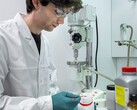Huawei, which is a relative newcomer in the electric vehicle industry, has filed a solid-state battery patent that promises up to 3,000 km (1,864 miles) of range on a fast charge that takes less than ten minutes.
The Chinese juggernaut that is more popular with its phone and long-life smartwatch devices like the GT 5 Pro, has joint ventures with EV makers and also offers a popular connectivity, infotainment, and autonomous driving stack as a turnkey solution.
Huawei says that the longest range ever cited for an EV will come courtesy of a proprietary solid sulfide electrolyte technology that involves sprinkling the reactive material with nitrogen to tame the electrochemical reaction.
Such solid-state battery technologies already exist, though, and plenty of companies like Toyota, Samsung, or the world's biggest battery maker CATL, are now aiming for commercialization in 2027 citing way more modest numbers.
Furthermore, Huawei's own patent tips that the energy density of its solid-state battery will be between 400-500 Wh/kg, which is in line with what everyone else is doing and within the theoretical promise of the nascent chemistry. The ultrashort charging time is also par for the course with the solid-state battery technology, and not some extraordinary research achievement.
According to one Korean scientist, Huawei is probably citing what its scientists have achieved in a lab, rather than what can realistically be produced on a mass scale:
While nitrogen doping can help with interface stability, it’s usually done under vacuum and with great precision. It's not something you can scale for commercial production without major cost and time penalties. It’s like trying to sprinkle pepper on a sandwich using tweezers.
Moreover, the cited range is most likely on the generous Chinese CLTC cycle, which usually overshoots real-world range by about a third compared to the EPA estimates in the US. This means that the solid-state battery made with technology from Huawei's patent will most likely be good for about 1,200 miles.
That is still calculated under ideal conditions with the weight of active material in the prototype, though. When "real-world factors like energy loss and thermal management" are taken into account, add the Korean researchers, the actual range will be much shorter, perhaps closing in on the 800 miles that Toyota already teased about its own solid-state battery performance.
That is still way longer than current batteries that offer half the energy density of solid-state cells in the same footprint, but then comes the question of mass production scalability and costs. These are hard to address even for CATL or Samsung, let alone Huawei, which has no experience making batteries.
Toyota already warned that its solid-state batteries will first be used in limited batches for its premium electric vehicles in the Lexus brand, so price will remain the main obstacle before wider solid-state battery adoption in the foreseeable future.





















